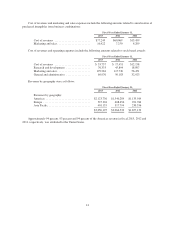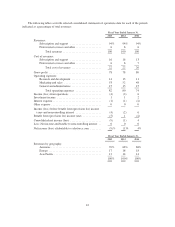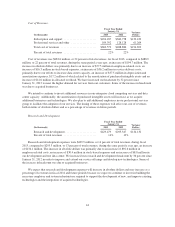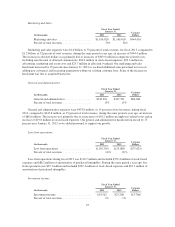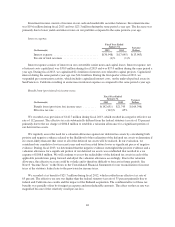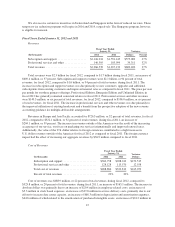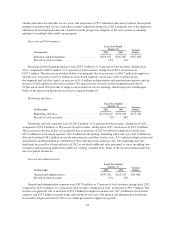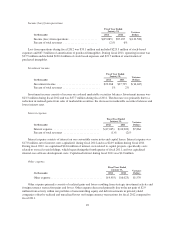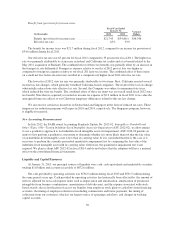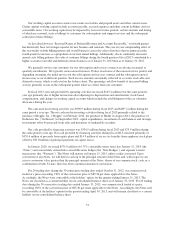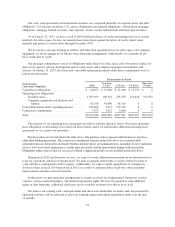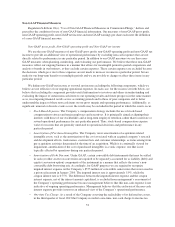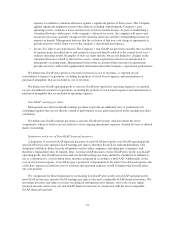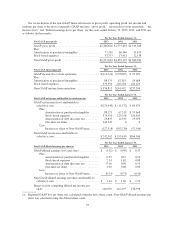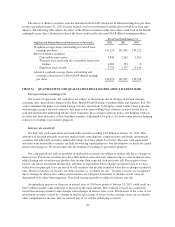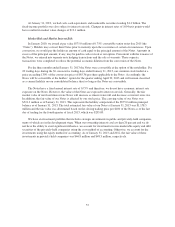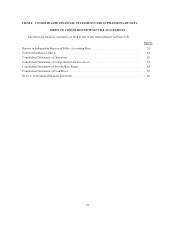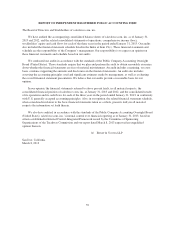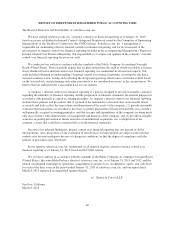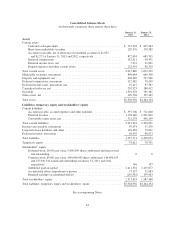Salesforce.com 2013 Annual Report Download - page 55
Download and view the complete annual report
Please find page 55 of the 2013 Salesforce.com annual report below. You can navigate through the pages in the report by either clicking on the pages listed below, or by using the keyword search tool below to find specific information within the annual report.Our working capital accounts consist of accounts receivables and prepaid assets and other current assets.
Claims against working capital include accounts payable, accrued expenses and other current liabilities and our
convertible notes. Our working capital may be impacted by factors in future periods, certain amounts and timing
of which are seasonal, such as billings to customers for subscriptions and support services and the subsequent
collection of those billings.
As described above in “Seasonal Nature of Deferred Revenue and Accounts Receivable,” our fourth quarter
has historically been our strongest quarter for new business and renewals. The year on year compounding effect of
this seasonality in both billing patterns and overall business causes the value of invoices that we generate in the
fourth quarter to increase as a proportion of our total annual billings. Additionally, due to continually increased
annual cycle billing patterns, the value of customer billings during the fourth quarter of fiscal 2013 contributed to a
higher accounts receivable and deferred revenue balances as of January 31, 2013 than as of January 31, 2012.
We generally invoice our customers for our subscription and services contracts in advance in annual or
quarterly installments. We typically issue renewal invoices 30 days in advance of the renewal service period, and
depending on timing, the initial invoice for the subscription and services contract and the subsequent renewal
invoice may occur in different quarters. Such invoice amounts are initially reflected in accounts receivable and
deferred revenue, which is reflected on the balance sheet. The operating cash flow benefit of increased billing
activity generally occurs in the subsequent quarter when we collect from our customers.
In fiscal 2013, net cash provided by operating activities increased $145.4 million over the same period a
year ago primarily due to higher net income after adjusting for depreciation and amortization, stock-based
compensation, and changes in working capital accounts which include the establishment of the tax valuation
allowance during the year.
Net cash used in investing activities was $938.9 million during fiscal 2013 and $489.7 million during the
same period a year ago. The net cash used in investing activities during fiscal 2013 primarily related to the
purchase of Rypple, Inc. (“Rypple”) in February 2012, the purchase of Buddy in August 2012, the purchase of
GoInstant, Inc. (“GoInstant”) in September 2012, capital expenditures, investment of cash balances and strategic
investments offset by proceeds from sales and maturities of marketable securities.
Net cash provided by financing activities was $334.5 million during fiscal 2013 and $75.9 million during
the same period a year ago. Net cash provided by financing activities during fiscal 2013 consisted primarily of
$351.4 million of proceeds from equity plans and $14.9 million of excess tax benefits from employee stock plans
offset by $31.8 million of principal payments on capital leases.
In January 2010, we issued $575.0 million of 0.75% convertible senior notes due January 15, 2015 (the
“Notes”) and concurrently entered into convertible notes hedges (the “Note Hedges”) and separate warrant
transactions (the “Warrants”). The Notes will mature on January 15, 2015, unless earlier converted. Upon
conversion of any Notes, we will deliver cash up to the principal amount of the Notes and, with respect to any
excess conversion value greater than the principal amount of the Notes, shares of our common stock, cash, or a
combination of both. To date, there has been a nominal amount of conversions.
For 20 trading days during the 30 consecutive trading days ended October 31, 2012, our common stock
traded at a price exceeding 130% of the conversion price of $85.36 per share applicable to the Notes.
Accordingly, the Notes were convertible at the holders’ option for the quarter ending January 31, 2013. The
Notes are classified as a current liability on our consolidated balance sheet as of January 31, 2013. For 20 trading
days during the 30 consecutive trading days ended January 31, 2013, our common stock traded at a price
exceeding 130% of the conversion price of $85.36 per share applicable to the Notes. Accordingly, the Notes will
be convertible at the holders’ option for the quarter ending April 30, 2013, and will remain classified as a current
liability on our consolidated balance sheet.
51


